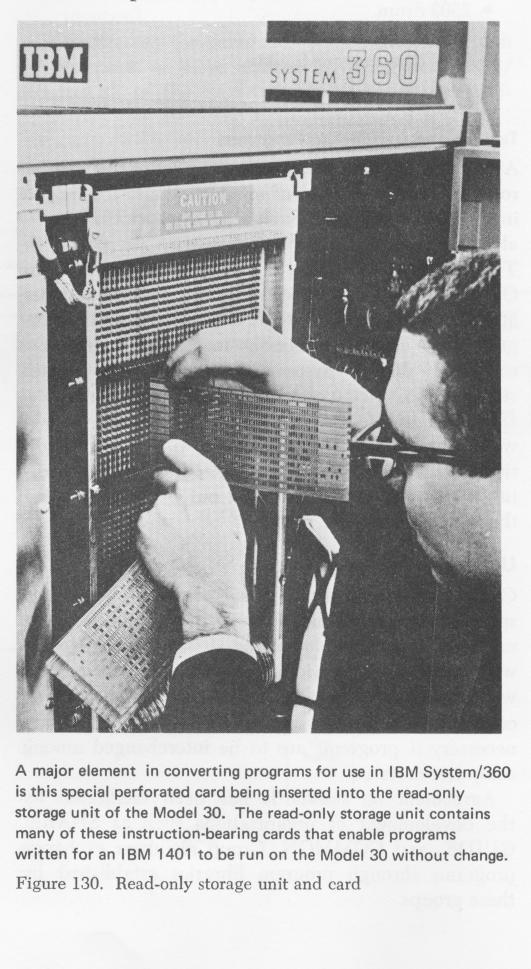Technology
Transfer: The IBM System/360 Case, Emerson Pugh
... Technology Transfer: The IBM System/360 Case. by. Emerson W ... Indeed,
this was the case for IBM during the 1960s when it introduced the IBM System/360
line of computers ...
www.ieee.org/organizations/history_center/Singapore/Pugh.htmIBM
System/360
- control stores facilitated compatibility among models
- emulation available in all but largest processor
- ease of customer migration created huge market rapidly
- System/360 became worldwide standard
|
| Of greatest concern was the need to migrate users of the
popular IBM 1401 computer to System/360 computers such as the small Model 30. The ability to emulate earlier computers was important to
customers, who ordered more than one thousand systems during the first four weeks after
the announcement. System/360 architecture soon became a de facto standard and dominated
the worldwide computer market for nearly a quarter of a century.
By the end of the 1960s, the company's plant in East Fishkill was producing more
semiconductor devices than the plants of all other companies in the world combined. |
| Defining the Problem The problem IBM faced was the direct result of rapid changes in technologies,
combined with dramatic growth in the computer market -- which was itself driven by the
rapidly improving cost/performance of critical technologies. The success of the IBM
1401 computer, announced in October 1959, highlighted the problem. Equipped with
discrete semiconductor logic circuits and up to 4000 characters of ferrite-core memory, it
was the first computer to be inexpensive enough to replace conventional
punched card equipment. By the end of 1961, the number of 1401's installed in the United
States had reached 2,000; this was 25 percent of all
electronic stored-program computers installed by all manufacturers to that time. As
workloads of IBM 1401 customers increased, they would want to migrate to larger systems -
but none of the first six IBM computers designed with transistor
circuits could run programs written for another. Furthermore, no competitive computers
were compatible with each other or with those of IBM. |
| The Transfer of Control Store Technology John W. Fairclough, who represented the IBM laboratory in Hursley, England,
made a particularly important contribution to the SPREAD task force: namely, use of a
high- speed special-purpose memory to control the logical flow of information in a
computer. This concept, known as a control store, had been proposed in 1951 by
Maurice V. Wilkes of Cambridge University in England. However at that time, there
was no memory technology with adequate cost/performance to implement the concept in a
commercial product. |
| Operating under the constraint imposed by IBM
President, Watson, in 1957 that all future products would use transistors (instead
of vacuum tubes), Fairclough and his colleagues began experimenting with ways to implement
a control store in a commercial product. Although their product design was
rejected, Fairclough had become convinced that control stores could be built economically.
Based on his experience, he promoted their use in System/360 to help achieve software
compatibility. Each program instruction of the System/360 instruction set would address a
word in the control store that would in turn contain the information
necessary to cause the wired-in logic of the computer to carry out the designated
instruction. The adoption of control stores for IBM
System/360 computers was the result of a successful technology transfer activity. It
involved a concept conceived at Cambridge University, researched and partially developed
in the IBM Hursley laboratory, and then transferred to other IBM development laboratories.
Control stores proved to be a cost- effective way to achieve software
compatibility among computers with differing performance and internal designs. |

